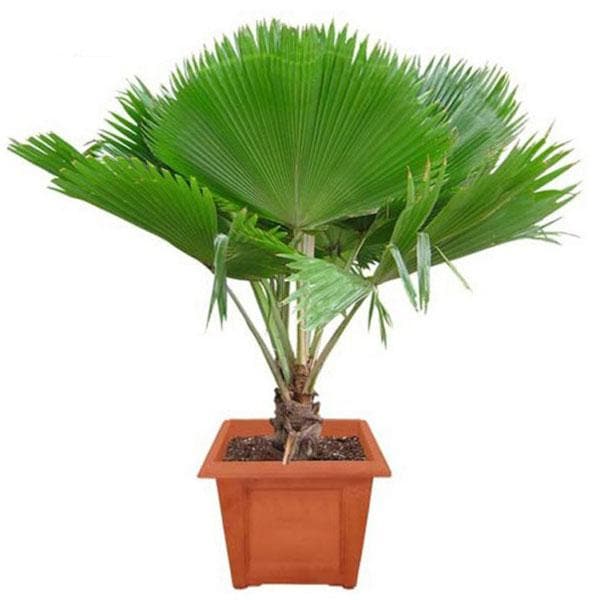
Fiji Fan Palm, Pritchardia pacifica - Plant
(MRP Inclusive of all taxes)
- Shipping ₹79 for entire order
- Dispatch in 7 days
- Country of origin: India

(MRP Inclusive of all taxes)

 Save up to 20%
Save up to 20%
Areca Palm (Small) - Plant The Areca Palm, scientifically known as Dypsis lutescens, is a stunning indoor plant that brings a touch of tropical el...
View full details
 Save 17%
Save 17%
Areca Palm - Plant The Areca Palm, scientifically known as Dypsis lutescens, is a stunning tropical plant that brings a touch of the exotic to any...
View full details
 Save 8%
Save 8%
Chamaedorea elegans - Parlour Palm The Chamaedorea elegans, commonly known as the Parlour Palm, is a stunning indoor plant that brings a t...
View full details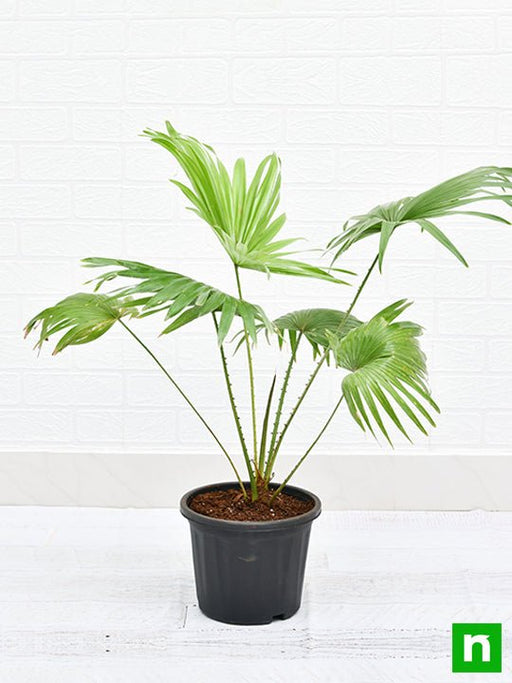
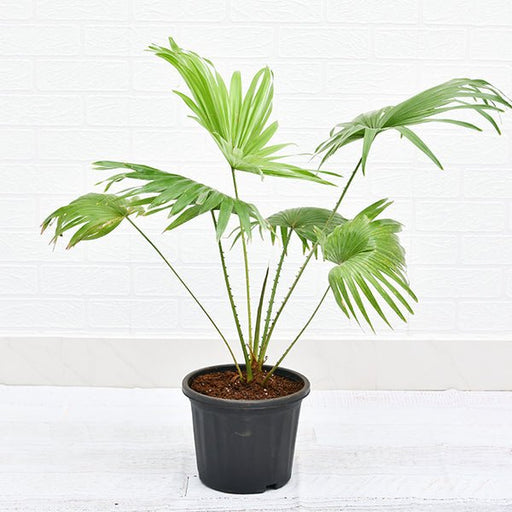 Save 25%
Save 25%
Table Palm, Umbrella Palm - Plant The Table Palm, also known as the Umbrella Palm (Cyperus alternifolius), is a striking aquatic plant tha...
View full details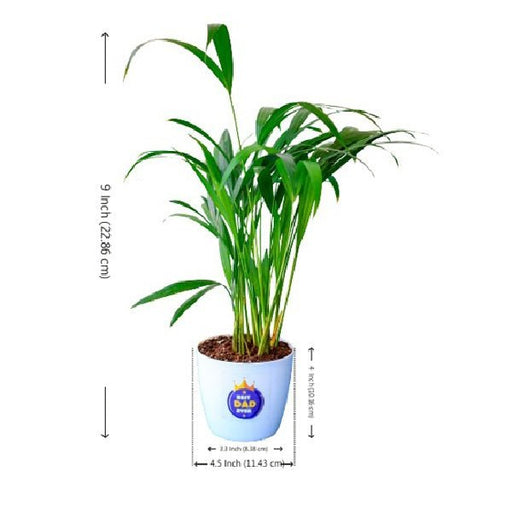
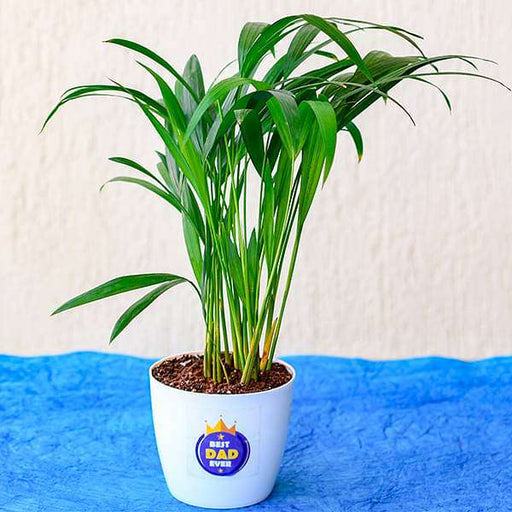
Best Indoor Areca Palm for Best Dad Ever Gift the gift of greenery with our Best Indoor Areca Palm, a perfect way to show your appreciatio...
View full details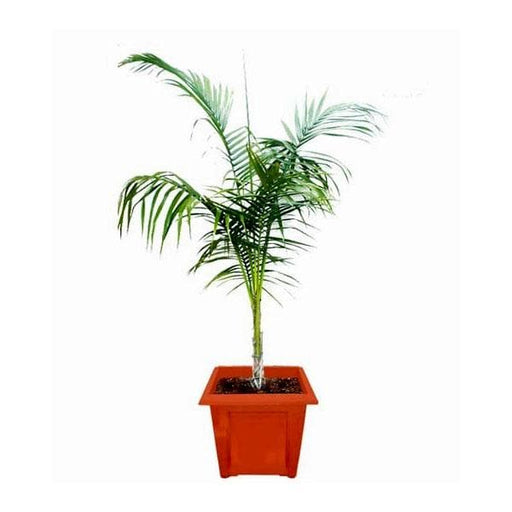 Save 17%
Save 17%
Royal Palm, Roystonea regia - Plant The Royal Palm, scientifically known as Roystonea regia, is a majestic tropical tree native to the Car...
View full details Save 15%
Save 15%
Raphis Palm, Lady Palm - Plant The Raphis Palm, commonly known as the Lady Palm, is a stunning tropical plant that brings a touch of elega...
View full details Save 15%
Save 15%
Pack of Vermicompost and Neem Cake for House Plants Transform your indoor garden with our premium Pack of Vermicompost and Neem Cake, spec...
View full details
Pack of Plant Growth and Flower Boosters Unlock the full potential of your garden with our Pack of Plant Growth and Flower Boosters! This ...
View full details Save 38%
Save 38%
Combo of Jeevamrut and Neem Raksha for Easy Growth and Protection of Houseplants Transform your indoor garden with our exclusive combo of ...
View full details Save 22%
Save 22%
Plant Nutrients Kit (Pack of 16) for a Healthy Garden Transform your garden into a lush paradise with our Plant Nutrients Kit, featuring 1...
View full details Save 16%
Save 16%
Combo of Top Plant Fertilizers Elevate your gardening game with our exclusive Combo of Top Plant Fertilizers, featuring two bags of premiu...
View full details Save 24%
Save 24%
Pack of 4 Additives to Make Soil Healthy and Nutrient Rich Transform your garden into a thriving ecosystem with our Pack of 4 Additives de...
View full details Save 30%
Save 30%
Transform your gardening experience with our premium Combo of Perlite and Vermiculite. This unique blend is designed to enhance soil aeration and ...
View full details Save 27%
Save 27%
Combo of 2 Vermicompost and Cocopeat - Enrich Your Soil Naturally! Transform your garden into a thriving ecosystem with our Combo of 2 Ver...
View full details
 Save 35%
Save 35%
Best 6 Plants for Perfect Indoor Garden Transform your living space into a lush oasis with our curated collection of the Best 6 Plants for a...
View full details
 Save up to 50%
Save up to 50%
Mini Succulent Garden Pack Transform your space with our Mini Succulent Garden Pack, featuring a delightful collection of 4 any variety beautiful s...
View full details
 Save 30%
Save 30%
5 Best Fragrant Plants Transform your garden or indoor space into a fragrant paradise with our curated selection of the 5 Best Fragrant Plants. Th...
View full details
 Save 24%
Save 24%
Set of 2 Bonsai Looking Grafted Adeniums Transform your indoor or outdoor space with our exquisite Set of 2 Bonsai Looking Grafted Adenium...
View full details Save 45%
Save 45%
Top 4 Die Hard Succulents Pack Transform your indoor or outdoor space with our Top 4 Die Hard Succulents Pack, featuring a curated selecti...
View full details
 Save 30%
Save 30%
5 Best Indoor Plants Pack Transform your living space into a lush oasis with our '5 Best Indoor Plants Pack.' This carefully curated collection fe...
View full details
 Save 25%
Save 25%
Set of 4 Evergreen Air Purifier Plant Pack Transform your indoor space into a lush, green oasis with our Set of 4 Evergreen Air Purifier Pla...
View full details| SrNo | Item Name |
|---|---|
| 1 | Fiji Fan Palm, Pritchardia pacifica - Plant |
The Fiji Fan Palm, scientifically known as Pritchardia pacifica, is a stunning tropical plant native to the islands of Fiji. With its fan-shaped leaves and elegant stature, this palm adds a touch of exotic beauty to any garden or indoor space. Known for its resilience and adaptability, the Fiji Fan Palm thrives in various environments, making it a popular choice among plant enthusiasts.
What makes the Fiji Fan Palm special is its unique ability to flourish in both sunny and partially shaded areas, providing versatility for landscaping. This palm can grow up to 30 feet tall, showcasing a striking crown of large, pleated leaves that can reach up to 5 feet in diameter. Its slow growth rate and long lifespan make it a cherished addition to any collection.
One of the special features of the Fiji Fan Palm is its ecological significance. As a native species, it plays a crucial role in its native habitat, supporting local wildlife and contributing to biodiversity. Additionally, it is known for its air-purifying qualities, making it an excellent choice for improving indoor air quality.
If you think caring for a Fiji Fan Palm is as easy as watering a cactus, think again! This tropical beauty requires a bit of pampering. Keep it in well-draining soil, give it a good drink when the top inch of soil is dry, and don’t forget to shower it with love (and maybe a little fertilizer). Remember, it’s not just a plant; it’s a lifestyle choice!
Patience is a virtue, especially when waiting for your Fiji Fan Palm to strut its stuff. This slow-growing diva can take its sweet time to reach its full height of up to 30 feet. So, if you’re looking for instant gratification, you might want to consider a plastic plant instead. But trust us, the wait is worth it!
Want to multiply your Fiji Fan Palm like rabbits? Propagation is the name of the game! You can try growing it from seeds, but be prepared for a waiting game that could rival a suspense thriller. Just remember, good things come to those who wait, and soon you’ll have a mini palm forest to show off!
The Fiji Fan Palm is a bit of a soil snob. It prefers well-draining, sandy loam that’s rich in organic matter. Think of it as the high-maintenance friend who only dines at five-star restaurants. If you can provide the right soil mix, your palm will reward you with lush fronds and a tropical vibe that screams paradise.
This palm is a sun worshipper! It thrives in bright, indirect light but can also handle some direct sunlight. Just don’t go throwing it into the blazing sun like a lobster at a beach party. Too much sun can scorch those beautiful fronds. Find the sweet spot, and your palm will be living its best life!
Like any diva, the Fiji Fan Palm can attract unwanted attention from pests. Watch out for spider mites and scale insects trying to crash the party. A little neem oil or insecticidal soap can help keep these party crashers at bay. After all, no one wants a pest infestation ruining their tropical paradise!
Why should you invite a Fiji Fan Palm into your home? Well, aside from its stunning looks, it’s a natural air purifier! This palm works hard to filter out toxins and improve indoor air quality. So, while it’s busy looking fabulous, it’s also doing you a solid by keeping your air fresh and clean. Talk about multitasking!
If you’re looking to add a touch of the tropics to your landscape, the Fiji Fan Palm is your go-to plant. Its fan-shaped fronds create a stunning focal point in gardens, patios, or even as a statement piece in your living room. Just imagine your friends’ faces when they see your personal slice of paradise!
Who says you can’t have a tropical getaway indoors? The Fiji Fan Palm makes a fantastic indoor plant, bringing a bit of the island vibe right to your living room. Just make sure it gets enough light and space to spread its glorious fronds. Your home will feel like a vacation destination in no time!
Watering a Fiji Fan Palm is an art form. Too much, and you’ll drown it; too little, and it’ll be parched. Aim for a Goldilocks approach—just right! Water when the top inch of soil feels dry, and your palm will thrive. It’s all about balance, much like your social life!
This palm is a tropical creature that loves warmth. Ideally, it prefers temperatures between 65°F and 85°F. If you live in a colder climate, consider bringing it indoors during winter. After all, no one wants their palm to catch a chill and start complaining about the weather!
Good news for pet lovers! The Fiji Fan Palm is non-toxic to cats and dogs, making it a safe choice for your furry friends. So, you can enjoy the beauty of this palm without worrying about your pets nibbling on its leaves. It’s a win-win situation for everyone involved!
The Fiji Fan Palm, or Pritchardia pacifica, is a tropical beauty native to Fiji. With its fan-shaped leaves and elegant stature, it’s like the palm tree version of a supermodel—tall, stunning, and always turning heads in the garden. Perfect for adding a touch of paradise to your landscape!
This palm can reach heights of up to 30 feet, making it the towering giant of your garden. Think of it as the gentle giant that provides shade and style, all while making your neighbors green with envy. Just remember, it’s not a tree you can ignore; it demands attention!
While the Fiji Fan Palm dreams of outdoor glory, it can survive indoors if given enough light and space. However, it’s like a diva—craving bright, indirect sunlight and room to stretch its leaves. If you can provide that, it might just grace your living room with its tropical charm!
This palm loves well-draining soil that’s rich in organic matter. Think of it as a high-maintenance friend who only thrives in the best conditions. A mix of potting soil and sand will keep it happy, ensuring its roots don’t drown in soggy situations.
Water when the top inch feels dry.
Yes, indeed! The Fiji Fan Palm enjoys a balanced fertilizer during the growing season. Think of it as a gourmet meal for your palm—providing essential nutrients to keep it vibrant and healthy. Just don’t overdo it; too much fertilizer can lead to a cranky palm!
Unfortunately, the Fiji Fan Palm isn’t a fan of the cold. It thrives in warm, tropical climates and shivers at temperatures below 30°F. If you live in a cooler area, consider bringing it indoors during winter or wrapping it up like a cozy burrito to protect it from the chill!
Propagation is a bit tricky with the Fiji Fan Palm, as it primarily grows from seeds. If you’re feeling adventurous, soak the seeds for a day before planting them in warm, moist soil. Just be patient; it’s not a fast process, but good things come to those who wait!
Keep an eye out for pesky pests like spider mites and scale insects. They can be as annoying as a fly at a picnic! Regularly inspect your palm and treat any infestations promptly with insecticidal soap or neem oil to keep your tropical beauty thriving.
The Fiji Fan Palm loves bright, indirect sunlight. It’s like a sunbather that prefers a little shade to avoid sunburn. Too much direct sunlight can scorch its leaves, so find that sweet spot where it can soak up the rays without getting fried!
Good news for pet owners! The Fiji Fan Palm is non-toxic to cats and dogs. So, let your furry friends frolic around this tropical beauty without worry. Just remember, while it’s safe, it’s still a plant—so keep an eye on them to prevent any leaf munching!
The ideal conditions include warm temperatures, high humidity, and well-draining soil. It’s like a tropical vacation for your palm! Aim for temperatures between 70°F and 90°F, and watch it flourish. Just remember, it’s not a fan of frost—so keep it cozy and warm!